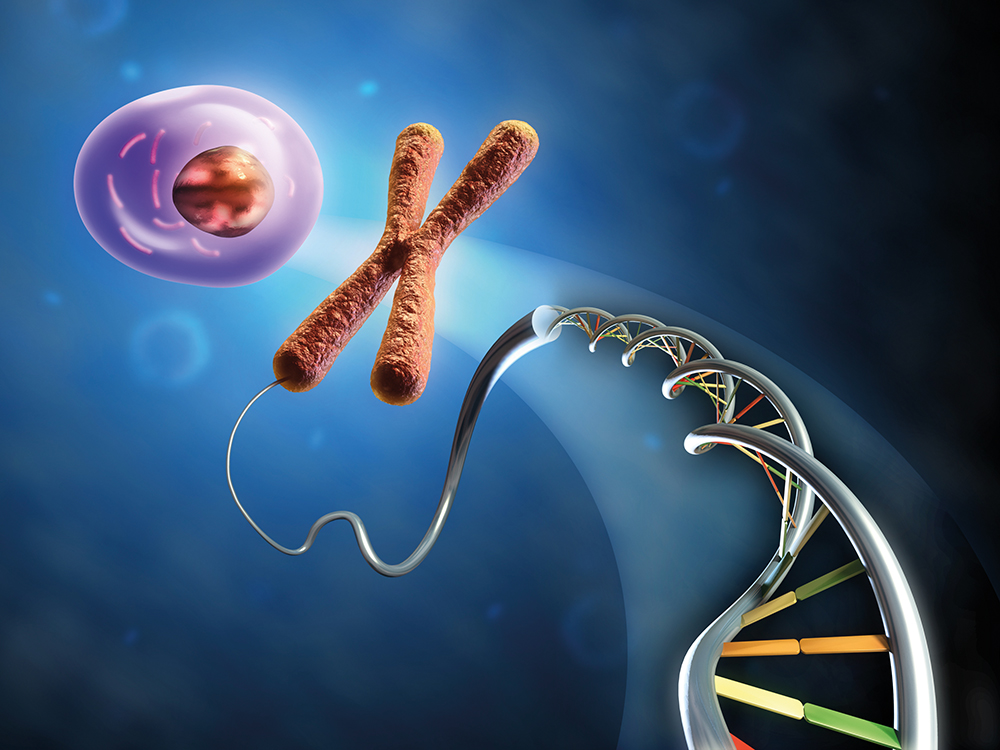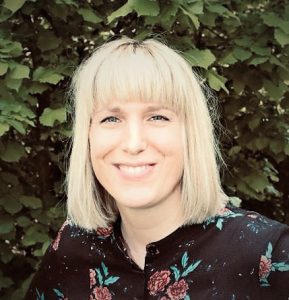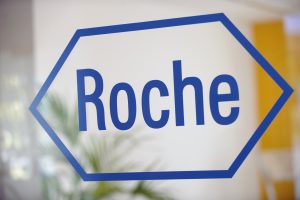Dr Elke Glasmacher – Identifying Molecular Mechanisms Controlling Immune Cell Function
The immune response entails the rapid activation of the immune cells to ensure effective defence from pathogens through the inflammatory pathway, as well as maintain immune homeostasis through the anti-inflammatory pathway. Immune cell activation happens as the result of rapid and severe changes in the expression of the immune-response genes. These depend on regulatory mechanisms controlling the processes of transcription, translation, and modification of these genes to produce functional proteins. Dr Elke Glasmacher, Head of Immune and Cell Biology at Roche, researches the important molecular mechanisms underlying how cells are activated or repressed.
Transcriptional and Posttranscriptional Regulation
Each gene is a piece of DNA containing the information (genetic code) to form a protein inside the cell. A specific DNA sequence is transformed into a specific polypeptide chain that makes the protein. In the journey from DNA to protein, the DNA is first transformed into a complementary molecule called RNA by a process called ‘transcription’. Next, this primary RNA molecule undergoes various ‘post-transcriptional modifications’. The most notable are: ‘splicing’, which involves removing of the parts that don’t ‘code’ for the protein and ‘capping’, a chemical modification that marks the RNA as mature for the cellular machinery to recognise and process for the next stage, the ‘translation’ into a protein.
Each stage represents an opportunity for the cell to precisely regulate when, how much, and for how long a particular protein will be produced. This fine regulation of gene (or protein) expression is particularly important for the cells of the immune system, as during an immune response there are rapid and severe changes in gene expression to support a rapid response to pathogens. Precise regulation of the immune-response genes is also a prerequisite to sustain immune homeostasis and ensure that the immune system is not aberrantly activated. Defective gene regulation can inhibit both inflammatory and anti-inflammatory responses leading to infections and autoimmune disorders, respectively.

From DNA to Cell
Regulatory Mechanisms in the Immune System
Increasing our knowledge about the regulation of the immune system is important to understand how to better control these processes and how their deregulation can cause disease. As a group leader at the Helmholtz Center (Munich, Germany), then as the Head of Immunobiology at Roche pRED, Large Molecule Research (LMR) (Munich, Germany), and now as Head of Immune and Cell Biology at Roche pRED/LMR, Dr Elke Glasmacher is working to elucidate the key regulatory mechanisms that control immune cell function.
The immune system can be either innate or adaptive. The adaptive immune system provides long-lasting immunity against pathogens with high specificity. The cells that carry out the adaptive immune response are white blood cells known as lymphocytes. There are two main classes of lymphocytes – B cells and T cells – that mediate antibody responses and cell-mediated immune responses, respectively.
The innate immune system, on the other hand, provides a non-specific response to pathogens and it is mediated by neutrophils, mast cells, basophils, eosinophils, dendritic cells, γδ T cells, and macrophages. Macrophages are among the key first-responders to pathogens and they express a large variety of specific protein receptors on their surface. Upon activation of these receptors, a systemic intracellular immune activation occurs, enabling various defence mechanisms. Thus, macrophages initiate inflammatory responses, including the expression of specific proteins named cytokines. Of these cytokines, interferons (IFNs) are the most inflammatory and rapidly induced. They are named for their ability to ‘interfere’ with viral replication, thereby protecting cells from virus infections.
Regnase-3: Complimentary Yet Independent Functions
Regnase is an RNA-binding protein with the role of degrading cellular and viral RNA upon certain immune system activation. Dr Glasmacher and her research team analysed Regnase-3 deficient mice, which develop hypertrophic lymph nodes indicative of infection. Regnase-3 deficiency systematically increased IFN signalling, which increased the proportion of immature B and innate immune cells. They found that, unlike Regnase-1, Regnase-3 expression is high specifically in macrophages and is transcriptionally controlled by IFN signalling. Their data consistently demonstrated that Regnase-3 is an RNase is a key regulatory factor in the IFN pathway in tissue macrophages, important to maintain cellular and systemic homeostasis. Although Regnase-3 is, in many ways, a functional complement to Regnase-1, it is also functionally independent due to its effects in macrophages within the IFN pathway.
These results indicate that Regnase-3 may be an important potential therapeutic target for diseases associated with tissue inflammation and deregulation of the IFN pathway, and therefore should inspire future studies to establish the targets and thus define in more detail the molecular mode of action of Regnase-3.

Identifying New Regulatory Elements and Transcription Factor Binding Partners
In the early stages of her research career, Dr Glasmacher studied the transcriptional regulation of T helper 17 (TH17) cells, a particular type of T lymphocyte. The process of transcription involves the binding of specific proteins known as transcription factors (TFs) to upstream regions of the gene that is going to be transcribed by the enzyme RNA polymerase. TFs often act in synergy and form different complexes with different ‘binding partners’ recognising different sequence motifs in different cells. This interaction specifies whether transcription of the target gene will be induced or inhibited by the TFs.
TFs play a very important role in transcriptional regulation. Dr Glasmacher was particularly interested in a TF that in B cells forms complexes with a second TF, before recognising specific DNA sequence motif in target genes, leading to ‘gene activation’. Binding to the TF co-partner directs the recruitment of this hetero-dimer in the particular gene locus bearing the specific DNA motif. The problem was that TH17 cells don’t produce this particular binding partner, and the mechanism of recognition of the particular DNA motif by the transcription factor was unknown.
Dr Glasmacher’s research revealed that, specifically in TH17 cells, the TF in question partners with a different protein and they both co-operatively bind to a different DNA motif, whose sequence was also identified. Even more importantly, the researchers made the critical finding that one single major complex drives a variety of genes to different extents for specific cells to differentiate.
The Importance of Roquin in Cellular Immune Responses
In addition to the pathways that ensure cellular and systemic responses to pathogens, the anti-inflammatory pathways that ensure immune homeostasis are just as important. Defects in the anti-inflammatory pathways can lead to inflammation caused by non-infectious agents, (such as toxins, chemicals, and mechanical trauma) and even to severe pathologies such as autoimmunity. RNA-regulating factors and posttranscriptional networks are known to play a particularly important role in the interplay between pro- and anti-inflammatory pathways. In the innate immune system, RNA-binding proteins specifically act as sensors, mostly for viruses and are associated with RNA recognition and degradation. RNA-binding proteins are also implicated in the resolution of cellular immune responses. For example, Roquin-1 and Regnase-1 control cellular immune responses and prevent autoimmunity.
In T cells, Roquin regulates the production of a protein called inducible costimulator (ICOS) by destabilising its mRNA in a process that requires the 3′ untranslated region (3′ UTR) of ICOS mRNA. Loss of Roquin results in loss of this post-transcriptional regulation, stabilisation of ICOS mRNA and therefore, constant ICOS protein production. Consequently, the ICOS protein reaches aberrantly high levels in T cells and, in mice lacking Roquin, this causes autoimmune phenotypes similar to systemic lupus erythematosus in human patients.
Dr Glasmacher’s research demonstrated that Roquin binds directly to ICOS mRNA, showing an intrinsic preference for a previously unrecognised sequence in the 3’ untranslated region (3’ UTR). Her work also showed that Roquin forms complexes with other factors during this interaction, to confer post-transcriptional repression. Critically, these newly described molecular functions of Roquin may be involved in the prevention of autoimmunity.

A Comprehensive Genome-wide Analysis
Isolated gene studies lack comprehensive analysis between the levels of gene regulation. However, research has now begun to elucidate the complexities of transcriptional and post-transcriptional networks before and after activation.
Notably, Dr Glasmacher’s group presented the first comprehensive genome-wide analysis on real-time temporal dynamics of transcription, splicing, and translation during T effector cell activation. Their data suggest a model in which T cells massively change their functional program by regulation of >2,000 genes. Here, changes in transcription and translation are extremely coupled for >90% of genes, and only a few genes show evidence for independent posttranscriptional or translational regulation. This coincides with fluctuations in cotranscriptional splicing rates.
This work by Dr Glasmacher and her group not only revealed the genome-wide course of events during a T helper response but also suggests a model in which rapid de novo recruitment of RNA Pol II dictates changes in transcription, consequently leading to coupled changes in translation. It remains an open question for future research as to how this rapid de novo recruitment is accomplished and whether the temporary reduction in cotranscriptional splicing represents a side effect or an important mechanism at the beginning of cell activation.
Current Work at Roche Innovation Center
In 2017, Dr Glasmacher moved to Roche pRED, Large Molecule Research where she headed the department for Immunobiology that mostly centred on the in vivo lead generation process for portfolio projects. Since 2019, she has led the department of Immune and Cell Biology. The department identifies and characterises lead candidates for portfolio projects and aims to mimic the potential mode of action, focussing on primary cellular functional readouts. She additionally leads early research initiatives for the advancement of large molecule platform technologies for all of Roche’s disease therapeutic areas.
One project aims to define the molecular mode of action of checkpoint receptor targeting by using engineered antibodies, addressing the question: How does the antibody format affect the checkpoint molecule’s mode of action? Here, she establishes high throughput single cell imaging readouts to correlate cellular phenotype and signalling behaviour via machine learning.
The second project is focusing on the identification of the underlying mechanism of immune tolerance in large molecule projects developed for cancer immunotherapy. Single cell sequencing approaches from different in vivo cancer models are the foundation and starting point of this project. Here, her background in identifying the gene regulatory mechanisms will help to develop the project further and enable new ideas to overcome such tolerances.
Reference
https://doi.org/10.33548/SCIENTIA493
Meet the researcher

Dr Elke Glasmacher
Head of Immune and Cell Biology
Large Molecule Research (LMR)
Roche Innovation Center Munich
Pharma Research and Development (pRED)
Roche
Dr Elke Glasmacher received her PhD in Immunology and Biochemistry from the Helmholtz Center in Munich, Germany. After a postdoctoral position at Genentech Inc, San Francisco, USA, on the molecular control for the development of autoimmune Th17 cells, she moved back to the Helmholtz Center as a Principal Investigator. Dr Glasmacher established a laboratory at the Helmholtz Center investigating the molecular mechanisms of gene regulation in immune cells. Since 2017, Dr Glasmacher changed to Roche and took over the department of Immune and Cell Biology at Large Molecule Research (LMR) in pRED Munich, Germany. The focus of Dr Glasmacher’s research understands the underlying molecular mechanisms that drive immune cell activation programs versus silencing mechanisms. Dr Glasmacher is an internationally recognised researcher with extensive experience in both industry and academia. She has published in prestigious journals, and has been awarded significant funding to support her research endeavours.
CONTACT
FURTHER READING examples
M von Gamm, A Schaub, AN Jones,…E Glasmacher, Immune homeostasis and regulation of the interferon pathway require myeloid-derived Regnase-3, Journal of Experimental Medicine, 2019, 216, 1700-1723.
J Lichti, C Gallus, … E Glasmacher, Immune responses-transcriptional and post-transcriptional networks pass the baton, Trends in Biochemical Sciences, 2018, 43, 1–4.
E Glasmacher, S Agrawal, AB Chang, et al, A genomic regulatory element that directs assembly and function of immune-specific AP-1-IRF complexes, Science 2012, 338, 975–80.
E Glasmacher, KP Hoefig, KU Vogel, et al, Roquin binds inducible costimulatory mRNA and effectors of mRNA decay to induce microRNA-independent post-transcriptional repression, Nature Immunology, 2010, 11, 725–33.
Creative Commons Licence
(CC BY 4.0)
This work is licensed under a Creative Commons Attribution 4.0 International License. 
What does this mean?
Share: You can copy and redistribute the material in any medium or format
Adapt: You can change, and build upon the material for any purpose, even commercially.
Credit: You must give appropriate credit, provide a link to the license, and indicate if changes were made.
More articles you may like
Dr Ralf Adam | New Technologies Shaping the Future of Oral Hygiene
Understanding the efficiency of various toothbrush technologies is essential for achieving optimal oral health. Dr Ralf Adam, who leads a dedicated team at Procter & Gamble in Germany, is keen to investigate the complexities of these technologies. His team have provided new insights into the best toothbrush types for plaque removal and the maintenance of gum health. By highlighting the importance of informed oral care decisions and ongoing investigations, this vital research works towards ensuring everyone can achieve a brighter, healthier smile.
WVU ADVANCE Center | West Virginia University Team Fosters Group-Level Equity and Inclusivity at Higher Education Institutions
Despite ongoing efforts to broaden participation in the academy, many groups remain underrepresented. More needs to be done to ensure that all faculty and students succeed in institutions of higher education. The WVU ADVANCE Center is an academic hub at West Virginia University, which provides services, events, mentorship opportunities, and other initiatives that promote the sense of belonging that leads to thriving faculty and students.
Dr Olalla Castro-Alvaredo | Measuring Entanglement: Symmetry-Resolved Entropy
Dr Olalla Castro-Alvaredo of the City University of London (UK) and her collaborators are advancing our understanding of an important phenomenon of quantum mechanical systems known as entanglement and, especially, its mathematical measures. Symmetry-resolved entanglement entropy is one such measure. Their study focuses on special quantum states which are excited with respect to a ground state. The research shows how the entanglement amongst quantum particles can be measured and assesses the contribution to the entanglement of quasiparticle excitations, particularly in the presence of additional symmetries.
Allison Balabuch – Professor Ann Brower Stahl | Bringing Archaeology to the Classroom and Beyond: The African Archaeology Review
The African Archaeology Review (AAR) journal recently celebrated its 40th anniversary. To mark this occasion, a special issue was compiled with an innovative theme: Archaeology for Education. To achieve this, the AAR editorial team assembled a group of academic researchers in archaeology with the proposition of writing articles collaboratively with educators that would make their research centred on Africa’s rich pasts accessible for use in school learning. The goal is to change the stories we tell about Africa both within and outside the continent.





